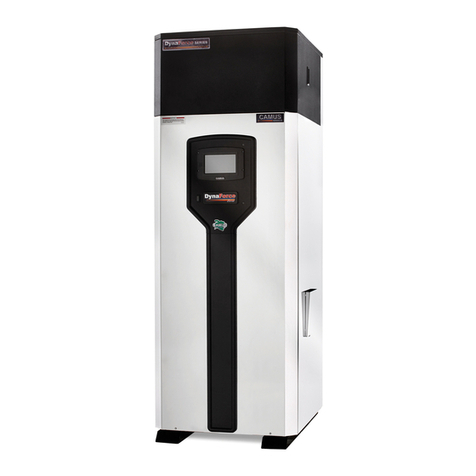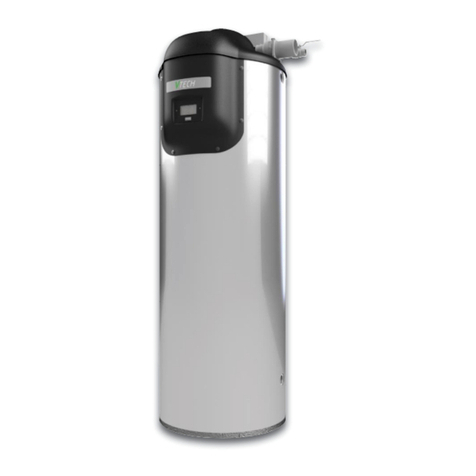99-0400 Rev.00
Contents
Part 1 - General Information.....................................................................................................................................................1
1.1 –Special Instructions to Owner ........................................................................................................................................................................1
1.2 –Product Overview.............................................................................................................................................................................................2
1.3 –Product Ratings................................................................................................................................................................................................2
1.3.1 –Capacity Ratings ...........................................................................................................................................................................................2
1.3.2 –Electrical Ratings ..........................................................................................................................................................................................2
1.3.3 –Dimensions and Connections .....................................................................................................................................................................3
1.4 –Sequence of Operation....................................................................................................................................................................................4
1.5 –Codes .................................................................................................................................................................................................................4
1.6 –Warranty ............................................................................................................................................................................................................4
Part 2 –Installation..................................................................................................................................................................4
2.1 –Checking the Equipment.................................................................................................................................................................................4
2.2 –Mechanical Environment.................................................................................................................................................................................4
2.3 –Locating the Equipment ..................................................................................................................................................................................4
2.4 –Clearances.........................................................................................................................................................................................................4
Part 3 –Heat Exchanger ..........................................................................................................................................................4
3.1 –Overview............................................................................................................................................................................................................4
3.2 –Double Wall Models..........................................................................................................................................................................................5
3.3 –Cleaning.............................................................................................................................................................................................................5
Part 4 –Electrical.....................................................................................................................................................................5
4.1 –Overview............................................................................................................................................................................................................5
4.2 –Field Power Supply ..........................................................................................................................................................................................6
4.3 –Fuses..................................................................................................................................................................................................................6
4.4 –Digital Output Wiring .......................................................................................................................................................................................7
Part 5 –Control........................................................................................................................................................................8
5.1 –Overview............................................................................................................................................................................................................8
5.2 –Screen Navigation ............................................................................................................................................................................................9
5.2.1 –<Control>......................................................................................................................................................................................................11
5.2.2 –<Alarm>.........................................................................................................................................................................................................11
5.2.3 –<Setup> (Installer Level Password: 3232)................................................................................................................................................12
5.2.3.1 –<Alarm Configuration> ............................................................................................................................................................................12
5.2.3.2 –<Data Logging> ........................................................................................................................................................................................13
5.2.3.3 –DataXport...................................................................................................................................................................................................14
5.2.3.3 –<Modbus>..................................................................................................................................................................................................16
5.2.3.4 –<PID Configuration>.................................................................................................................................................................................16
Part 6 –Components .............................................................................................................................................................17
6.1 –Electro-Hydraulic Actuator............................................................................................................................................................................17
6.1.1 –Operation......................................................................................................................................................................................................17
6.1.2 –Stroke Calibration........................................................................................................................................................................................17
6.1.3 –Manual Operation ........................................................................................................................................................................................17
6.2 –Temperature and Pressure Relief Valve (If Supplied) ...............................................................................................................................17
6.2.1 –Overview.......................................................................................................................................................................................................17
6.2.2 –Re-inspection of T&P relief valve..............................................................................................................................................................18
6.3 –Aquastat (Manual Reset) ...............................................................................................................................................................................18
6.4 –Circulator Pump..............................................................................................................................................................................................18
6.4.1 –Overview.......................................................................................................................................................................................................18
6.4.2 –Troubleshooting ..........................................................................................................................................................................................20
Appendix A –Special Considerations for low volume boilers dedicated only to a DHW load.............................................21
Appendix B –Electrical Schematics –DynaFLO...................................................................................................................22
DynaFLO LIMITED WARRANTY.............................................................................................................................................23






























